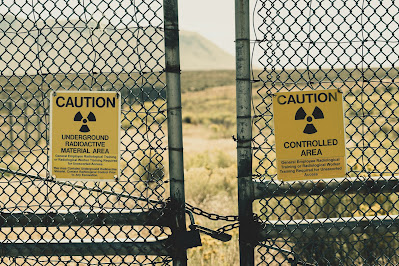Featured
The Role of Astronomy in Navigation: Ancient & Modern Times
The Role of Astronomy in Navigation: Exploring how ancient civilizations used the stars for navigation and how modern technology has advanced this field
Navigation is an essential skill that humans have relied upon for centuries. Before the invention of modern technology, ancient civilizations looked to the stars for guidance and orientation. Astronomy played a crucial role in their ability to navigate across vast oceans and unfamiliar terrains. In this article, we will explore how ancient civilizations used the stars for navigation and how modern technology has advanced this field.
Ancient Celestial Navigation
Long before the discovery of the magnetic compass, ancient civilizations developed sophisticated techniques for navigating using the stars. They observed the positions and movements of celestial bodies, such as specific stars, the Sun, and the Moon, to determine their spatial orientation. This practice, known as celestial navigation, allowed sailors and explorers to navigate the open ocean without any landmarks.One of the key tools used in ancient celestial navigation was the astrolabe. This instrument allowed sailors to measure the angle between a celestial body, such as a star, and the horizon. By comparing this angle to known values, they could determine their latitude, or how far north or south they were from the equator. This information was crucial for plotting their course and avoiding dangerous obstacles.
The Importance of Constellations
Ancient civilizations also relied on constellations, groups of stars that form recognizable patterns, for navigation. They identified specific constellations that were visible at different times of the year and used them as reference points. For example, the North Star, also known as Polaris, was a crucial navigational aid in the Northern Hemisphere. It appears almost stationary in the night sky, making it a reliable indicator of north.By observing the position of the North Star or other constellations relative to the horizon, ancient navigators could determine their direction of travel. They would use simple tools, such as a cross-staff or quadrant, to measure the angle between the celestial body and the horizon. This information, combined with their knowledge of the stars and constellations, allowed them to navigate with a remarkable degree of accuracy.
The Advent of the Magnetic Compass
While celestial navigation was a remarkable achievement, it had its limitations. It relied on clear skies and a clear view of the stars, making it challenging during cloudy or stormy weather. Additionally, it was not suitable for navigation in regions close to the poles, where certain stars and constellations were not visible.The invention of the magnetic compass revolutionized navigation. The magnetic compass, which indicates direction relative to the Earth's magnetic poles, provided a reliable and portable tool for sailors and explorers. It allowed them to navigate with greater ease and accuracy, even in adverse weather conditions.
Modern Advances in Navigation Technology
In modern times, technology has further advanced the field of navigation. Global Positioning System (GPS) technology, for example, has become an integral part of navigation in various domains, including maritime, aviation, and land-based navigation. GPS relies on a network of satellites that transmit signals to receivers on Earth, allowing them to determine their precise location.GPS has revolutionized navigation by providing real-time positioning information with high accuracy. It has made navigation more accessible and reliable, enabling people to navigate with confidence in both familiar and unfamiliar environments. GPS technology has become an essential tool for pilots, sailors, hikers, and even everyday commuters.
The Future of Navigation
As technology continues to advance, the field of navigation is likely to see further innovations. For example, there are ongoing efforts to develop autonomous navigation systems that can operate without human intervention. These systems rely on advanced sensors, artificial intelligence, and machine learning algorithms to navigate and make decisions in real-time.Furthermore, advancements in space exploration and astronomy continue to contribute to our understanding of the universe and its celestial bodies. This knowledge can be harnessed to improve navigation systems and develop new methods for orientation and positioning.
Conclusion
Astronomy has played a vital role in the history of navigation. Ancient civilizations used the stars and constellations to navigate across vast oceans and uncharted territories. Their techniques and tools laid the foundation for modern navigation systems. The invention of the magnetic compass and the development of GPS technology have further revolutionized navigation, making it more accessible and accurate than ever before. As technology continues to advance, the future of navigation holds exciting possibilities, driven by ongoing advancements in astronomy and space exploration.
Citations:
[1] https://www.cantorsparadise.com/navigation-through-stars-ae8c1a3ffbb2
[2] https://www.nbcnews.com/id/wbna26798102
[3] https://www.space.com/5849-navigating-stars.html
[4] https://www.greatassignmenthelp.com/blog/astronomy-topics/
[5] http://www.weems-plath.com/About/History-of-Navigation.html
[6] https://essaywriter.org/astronomy-research-paper-topics
Popular Posts

Why are Memories Forgotten?
- Get link
- X
- Other Apps

How is the Colour of a Lobster Determined?
- Get link
- X
- Other Apps

Can Sound Waves Solve Plastic Pollution?
- Get link
- X
- Other Apps

Can Animals Recognise Human Faces?
- Get link
- X
- Other Apps

Do plants sleep? The surprising science of sleep in the plant kingdom
- Get link
- X
- Other Apps

Is the Earth Spinning Faster?
- Get link
- X
- Other Apps

Can Bad Times Actually Improve Your Life? Surprising Benefits of Adversity
- Get link
- X
- Other Apps

Can Brain Implants Make You More Powerful?
- Get link
- X
- Other Apps

The Future and Potential of Nuclear Batteries
- Get link
- X
- Other Apps

Music and its impact on Studying
- Get link
- X
- Other Apps
Popular Posts

Why are Memories Forgotten?
- Get link
- X
- Other Apps

How is the Colour of a Lobster Determined?
- Get link
- X
- Other Apps

Can Sound Waves Solve Plastic Pollution?
- Get link
- X
- Other Apps

Can Animals Recognise Human Faces?
- Get link
- X
- Other Apps

Comments
Post a Comment